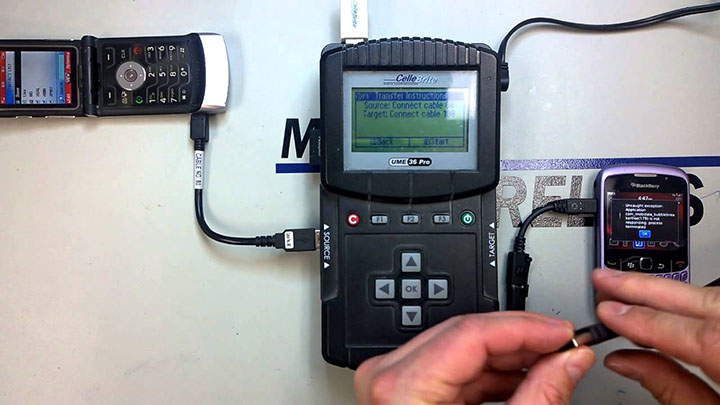How Cloud Services Work With Contacts
Remember when you got your first smartphone? For me, it was Christmas Day 2007. I saw that perfectly-shaped patented box, dressed up in Santa Claus wrapping paper, sitting under the tree and I couldn’t wait to tear the baby open. I recall going back to school so vividly, mostly because I was the first person on my dorm floor with an iPhone. It was glorious. Although my proud moment as a tech-savvy early adopter lasted all of about a week before I realized I didn’t know what the hell I was doing with the thing. This scenario or something similar, I imagine, played out across the US, as people began transitioning to smartphones.
But before I could unlock the vast capabilities of my new device, I had to set up the basics: I needed to enter some phone numbers and email addresses, so I could communicate.
The concept of “my contacts” was pretty simple before I had a smartphone. Prior to 2008, I had a handy-dandy Moto Razr. All my contacts lived on my actual phone. If I wanted to switch phones I could backup my contacts to the SIM card that lived in that phone. Then I could easily remove the SIM card, put it into a different phone and all my contacts would be there. It was straightforward and easy to understand. If I wanted to switch carriers, it got a little more complicated but wasn’t too bad. Anyone remember these SIM card transfer devices?

But if I lost my Moto Razr? Oh man, things weren’t so rosy. In the era of traditional cellphones, if you lost your phone, all of your contacts were gone with it.
Once smartphones emerged with real Internet connections, the ability to sync contacts “to the cloud” promised to replace old SIM card backups and transfers. In many ways this was amazing, since losing a phone would no longer mean losing your contacts. Or at least that’s the way cloud sync is supposed to work…
In reality, cloud services are somewhat mysterious and hidden from view. Most people aren’t even aware of their existence. They silently work away in the background of your device.
Soooo, how do these cloud services really work? What do they do with your contacts? And where is the cloud pulling contact information from?
Let’s start with the Contacts App. It’s just like your mom’s old address book right? It’s where you save contact information like names, phone numbers and emails so you can make calls and send messages. When someone changes their number or gets a new email, you just easily update their information directly on your device.
Turns out it’s a lot more complicated, and thanks to help from the engineers here at Charge, I kinda, sorta, get it now. The information you see in your Contacts App actually lives inside a cloud service that does a lot more than just store information like the SIM card backups of yesteryear. Cloud services can also sync contact information across all my devices and share it with other applications in an attempt to make my life easier. But I didn’t realize that there is more than one cloud service communicating with my device, which can make things pretty confusing.
So, what contacts cloud services is my phone communicating with?
Currently, my iPhone communicates with iCloud, which is the default cloud service for all Apple products. Yep, I am still an Apple devotee. But my iPhone also communicates with Google Contacts, the contact provider for my GMail account, which is connected to the Mail app on my iPhone.
Both iCloud and Google Contacts are contacts cloud service providers. They each store information via the Internet to their individual servers, rather than storing information solely on my phone’s hard drive or SIM card.
GMail stores all the contact information of your email address book within Google Contacts. When you add a new email address, phone number, or other contact-identifier in GMail you are adding it to your Google Contacts, which provides contact data for all Google products.

When you link a new cloud service to your device (for example, connecting your GMail account to your device’s Mail app) you are telling your device to pull information, usually including contacts, from a new server in addition to your default cloud service provider. If you sync your contacts from a new cloud service provider, those contacts will appear in the Contacts App, just like contacts stored to your default cloud service.
Both the default and any other cloud services you connect to your device operate independently from your Contacts App. The Contacts App on your phone is merely a convenient way to view and edit all the synced contact data from your various contact providers in one easy-to-read place.
So, what if you switch cloud service providers?
If I unlink a cloud service from my device, like my GMail account from my iPhone, I will no longer see those contacts on my device. But those contacts aren’t actually gone because they are still saved in the Google Contacts cloud. The only change is that those contacts are no longer visible from my native Contacts App.

For iPhone users, the concept of iCloud vs. other cloud service providers is a little complicated. But for Android and other operating systems it gets even more confusing. Although Android is a Google product, the Android operating system does not force manufacturers or carriers to use Google Contacts as the default contacts provider. This means your default cloud service could be one created by your carrier or manufacturer. These providers often make it difficult to sync your contacts across multiple devices, transfer your contacts to a new phone or switch to a different carrier.
And with an iPhone connected to iCloud your contacts data is only synced to other Apple devices. That’s great if you’re a committed Apple customer. But just bought an Android tablet? That iCloud service isn’t going to help you.
And so what have I discovered through the process of importing my contacts? Sadly, cloud services may not be as helpful as all the buzz around them would have you believe. Contact cloud services and contact syncing is confusing, so be careful where you store your contact info. As consumers, we are moving toward having more connected devices. So it’s important to actually understand how these cloud services work. And more importantly, to know whether they will function on our future connected devices. It might be time to consider a cross-platform contacts cloud service…
(SIM Card Data Transfer by GoCellPhoneRepair)
